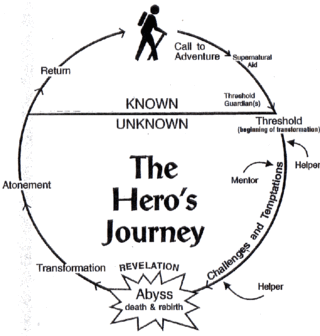Here are some links to lists of possible themes.
The
NHD 2020 Theme Book has many suggestions linked to different museums and historical groups. You'll have to scroll down towards the last third of the guide book where they are listed. It's a good idea to read through this book to get a good since of what is involved in winning National History Day.
Check this space for additional topics. We'll add more as we find them.
Breaking Barriers in History
Physical Barriers
Berlin Wall
Lewis and Clark Expedition
Cumberland Gap & Daniel Boone
Transcontinental Railroad
John Wesley Powell
Panama Canal
Building of the Golden Gate Bridge
Japanese Internment
Innovation Barriers
Nicolaus Copernicus
Galileo Galilei
Hedy Lamar (Mathmatician/Actress)
Cecilia Payne Gasosdekin
Development of Braille
Susan LaFlesche Picotte
Joseph Lister
Nuclear Weapons
Heart Transplant
Smallpox Vaccine
Apollo Mission
Margret Hamilton
AIDS / HIV Crisis
Development of Communication:
Telegram, Telephone, Radio
Valery Legasov, Chernobyl
Buck vs. Bell
Eli Whitney
Samuel Morse
Robert Fulton
Penicillin
John Audubon
John Muir
Dorothea Dix
Women in Scientific Revolution:
Countess of Lovelace, Maria Winkelmann,
Countess of Chinchon, Emilie du Châtelet,
Maria Cunitz, Lady Mary Wortley Montagu,
Margaret Cavendish, Elisabeth Hevelius
Clara Barton, American Red Cross
Alexander Graham Bell
Wright Brothers
Thomas Edison
Legal Barriers
Trail of Peter John Zenger, 1735
Homestead Act
Chinese Exclusion Act
Scopes Monkey Trial
Westminster v. Mendez
Truman Desegregation
Chief Justice Earl Warren & the Warren Court
Brown v. Topeka Board of Education (1954)
Ruby Bridges
Little Rock Nine
Boston Busing Boycotts
Berkeley Free Speech Movement
Perez v. Sharp (1948)
Griswold v. Connecticut (1965)
Loving v. Virginia (1967)
West Virginia v. Barnette (1943)
Brandenburg v. Ohio (1969)
Cohen v. California (1971)
Texas v. Johnson (1989)
Brown v. Board of Education (1954)
Gideon v. Wainwright (1963)
Hazelwood v. Kuhlmeier (1988)
Miranda v. Arizona (1966)
New York Times v. Sullivan (1964)
Tinker v. Des Moines (1969)
Dred Scott v. Sandford (1857)
Plessy v. Ferguson (1896)
Baker v. Carr (1962)
Gideon v. Wainwright (1963)
Plessy vs. Ferguson
Americans with Disabilities Act
Education of Handicapped Children Act
504 Sit-ins
Immigration and Naturalization Act of 1965
Lyndon B. Johnson and the Voting Rights Act
Societal Barriers
Romanticism Literature
Reformation
Counter Reformation
Papal Schism
Martin Luther, 98 Theses
Akbar, the Mughal Empire, and Divine Faith
Russian Orthodoxy
Gutenberg Printing Press
Ann Hutchinson
Great Awakening
El Clamor Publico
Allensworth Township
Booker T. Washington
Nellie Bly
Thomas Gallaudet
Hellen Keller
Tennessee Home for Children
Jane Addams, Hull House
Jacob Riis
Margaret Sanger
Flappers
Jesse Owens
Code Talkers
Zoot Suit Riots
Private Desmond Doss
Greensboro Sit-ins
Lavender Scare
Compton’s Cafeteria Riots
Martin Luther King Jr.
The Southern Christian Leadership Conference
1968 Mexico City Olympics
Black Power Movement
NAACP
Walter White - Anti-lynching activist
Harvey Milk
Stonewall
Temple Grandin
WACS: women in the armed services
Chicano Student Walkout in LA High Schools
Billie Jean King vs. Bobby Riggs
Gloria Steinem
Phyllis Schafly
Sandra Day O’Connor
Don’t Ask Don’t Tell Policy
Political Barriers
Pericles
Cincinnatus
Anne of Cleves
Benazir Bhutto
King George & Qian Long
Queen Elizabeth I
Queen Mary of Scots
Magna Carta
English Bill of Rights
Declaration of Rights of Man and Citizen
Mayflower Compact
Roger Williams
Sons of Liberty
Paul Revere
Boston Tea Party 1773
Benjamin Franklin
Declaration of Independence
French Revolution
Maximilien Robespierre
Whiskey Rebellion, 1794
Political Parties
Alexander Hamilton
Marbury v. Madison (1803)
Fletcher v. Peck (1810)
Toussaint L ’Overture
Bonaparte Napoleon
John Brown
Harriet Tubman
Joseph Smith
Brigham Young
Ida B. Wells
Susan B. Anthony
National American Woman Suffrage Association (NAWSA)
National Woman’s Party (NWA)
Wyoming granting women’s suffrage
Alice Paul
Virginia Woodhull
Eugene V. Debs’ Leadership of the American Socialist Movement
New Deal and Great Society
Eleanor Roosevelt
Wilma Mankiller
Thurgood Marshall
Shirley Chisholm
Affirmative Action
Bakke v. University of California (1978)
Nixon’s Southern Strategy
Chicano Student Walkouts
Chicano Park
People’s Park
Walter Cronkite and Vietnam
Watergate Journalism
Geraldine Ferraro
International/Diplomatic Barriers
Treaty of Westphalia Congress of Vienna
Monroe Doctrine
Perry Expedition
54° 40' or Fight
Treaty of Waitangi
Environmental Barriers
Chernobyl
Animals in World War I
California Grizzly
California Coastal Commision
Bodega Head Nuclear Power Plant
Three Mile Island
Biosphere
National Parks Service Act
Bowman v. Monsanto (2013)
Louisiana Purchase
Lewis and Clark Expedition
Pat Brown California Aqueducts
Theoretical Barriers
Thomas More, Utopian Theory
John Locke
Voltaire
Montesquieu
Rousseau
John von Neumann, Game Theory
Carl Sagan
Manifest Destiny
Economic Barriers
Silk Road
Pax Mongolica
Trans-Saharan Trade
Sakoku
Henry the Navigator
British-Chinese Trade
Columbian Exchange
Three Gorges Dam
Dutch Trading Company
Adam Smith
National Road
Homestead Act
Transcontinental Railroad
Biddy Mason
Pullman Porters Strike
Railroad Strike of 1877
Grange Movement
Labor Reform
Mother Jones
Great Migrations
Tucker 48
Interstate Highway Act
Female Property Ownership
Cesar Chavez
Creation of Standard Time
California v. Cabazon Band of Mission Indians
Civilian Conservation Corps
Rosie the Riveter
Curt Flood
Free Agency in Baseball
North American Free Trade Agreement (NAFTA)
Artistic Barriers
Muse d'Orsay
Impressionism
Pablo Picasso
E.E. Cummings
Ida Lupino
Tommy Dorsey
Maria Tallchief
Oscar Michaeny
Andy Warhol
Hollywood Studio System
Frank Lloyd Wright
Woodstock
Harlem Renaissance
Royal Chicano Air Force
Pearl S. Buck
Women New Wave Artist
Amy Tan
Brancusi v. US (1928)
Jazz -
Marian Anderson








